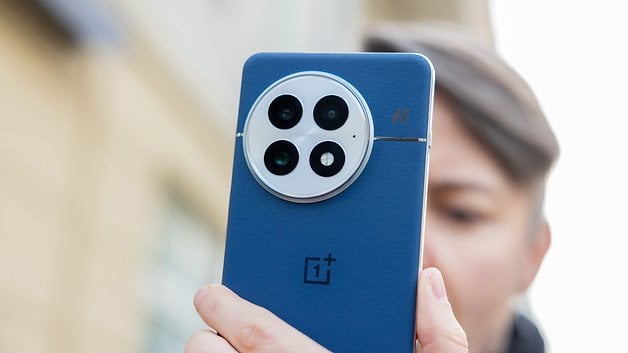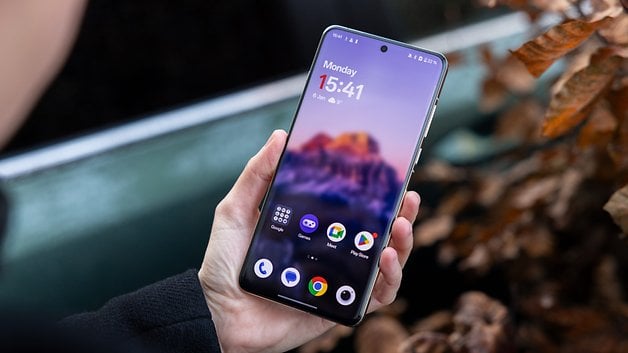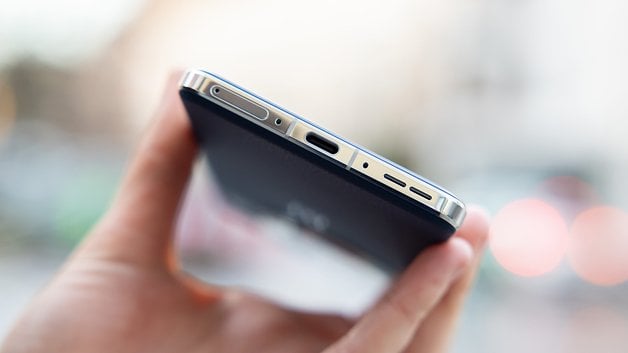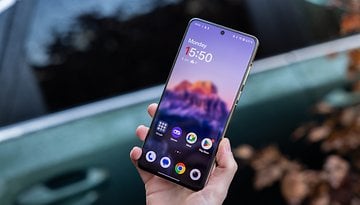OnePlus 13: A Flagship That Gets It Right—Our In-Depth Review!


OnePlus has been steadily raising the bar for its flagship smartphones year after year, and with the OnePlus 13, it feels like they've hit a high note. Whether you're a loyal OnePlus fan or just an Android enthusiast, this new release checks all the right boxes—and does so without breaking the $1,000 mark. That’s a rare feat in today’s flagship landscape, making it a standout option for anyone looking for top-tier performance without the flagship price bloat.
Good
- Big, vibrant display
- Consistent performance
- Versatile camera module
- All-day battery life
- IP68 and IP69 Certifications
Bad
- Available in only one size
- Protective film on display is noticeable at the edges
- Qi2 support requires a MagSafe-compatible phone case

Large Display in a Durable Shell
OnePlus continues its direct approach to smartphones: One size fits all. This philosophy shapes the experience with the OnePlus 13. With a 6.82-inch display measured diagonally, it's a large device, but its slim profile and decent grip make it manageable—though one-handed use is a stretch. For example, reaching the volume-up button without adjusting your hand is practically impossible.
The back of the phone features a modestly sized camera bump, which is a refreshing departure from the massive protrusions seen on other flagships. This adds balance when holding the device. While I’ve never been a fan of microfiber vegan leather, the blue review unit I received is strikingly original. It screams OnePlus in a way that feels distinct and confident.
One standout design feature is the Alert Slider. It’s delightfully simple and intuitive—an underrated convenience in a world where other brands are phasing out such physical toggles.
OnePlus 13: A Closer Look at the Design and Display
- Dimensions: 162.9 × 76.5 × 8.5/8.9 mm; Weight: 210-213 g
- Display: 6.82" QHD+ (3168 × 1440), 510 ppi, 120Hz ProXDR with LTPO 4.1
- Brightness: 1600 nits (HBM), 4500 nits (peak)
- Features: 19.8:9 aspect ratio, 10-bit color, Ceramic Guard glass, IP69
The display is massive and delivers an exceptional media experience with vibrant colors and stunning brightness. Watching movies or gaming is a visual treat. OnePlus has also equipped the OnePlus 13 with ceramic guard glass, which enhances scratch resistance and touch sensitivity—a thoughtful addition.
However, OnePlus has dropped the curved-edge display for this model, which disappointed me as a fan of the aesthetic and ergonomic advantages of curves. Adding to this is the protective film on the edges of the flat display. When using gestures—like swiping from the edge to go back or accessing the Smart Sidebar—I could feel the edge of the film under my fingertips. It’s a small but constant annoyance. Perhaps it’s just me, but this detail stood out enough to warrant a mention.
The OnePlus 13 doesn’t just look good; it’s built to last. It boasts an impressive IP68 and IP69 certification, making it highly resistant to water. In fact, it’s so robust that you could accidentally leave it in your pocket during a wash cycle, and it would likely emerge unscathed. Yes, even a quick rinse in the dishwasher (sans salt water) is within its capabilities. I’m not joking—this is what IP69 is designed for.
Combine this exceptional durability with OnePlus’s solid hardware and software update policy, and the OnePlus 13 stands out as an excellent choice for anyone seeking a smartphone they can rely on for years.
Software and AI Features
The OnePlus 13 ships with Android 15, layered with the company’s signature OxygenOS 15. Compared to the OnePlus 12 we reviewed last year, this iteration not only integrates Google's latest AI advancements but also introduces exclusive AI features developed in collaboration with Oppo, OnePlus's sister company.
OnePlus has committed to 4 years of Android OS updates and 6 years of security patches, ensuring long-term software support—a welcome move for anyone prioritizing longevity.
OnePlus 13: A Quick Look at the Software
- OS: OxygenOS 15.0 (based on Android 15)
- Update Policy:
- 4 years of Android OS updates
- 6 years of security updates
We had a chance to explore OxygenOS 15 last year, and I recommend checking out the top features of this streamlined operating system. For this review, I want to emphasize the strides OnePlus has made to refine its OS further. The engineering team focused on keeping the system lightweight and fast, resulting in more available internal storage and smoother animations. These subtle yet meaningful improvements significantly enhance the overall user experience.
OnePlus has also fine-tuned the user interface based on feedback from its community. Notable changes include a reorganized settings menu and a separation between the notification panel and quick settings bar. These tweaks feel intuitive and, in my opinion, add to the device's usability.
On the AI front, OnePlus delivers several handy tools, including advanced text and image editing capabilities, on-device search using the files and images, and Gemini Live Assistance. However, many of these features rely on cloud processing, which could be a concern for privacy-conscious users. That said, this challenge isn’t unique to OnePlus—it’s an industry-wide trade-off at the moment.
One feature that stood out for me is the AI Reflection Eraser. It’s incredibly effective and solves a common problem: accidental reflections in photos. While it doesn’t deliver perfection every time, it reliably fixes those minor details we often overlook when snapping pictures. Here’s an example to illustrate how well this tool works.
Speed, Power, and Efficiency
The OnePlus 13 runs on the powerful Snapdragon 8 Elite processor, delivering incredible performance. It handles demanding apps, multitasking, and gaming effortlessly, offers stunning visuals for gaming and streaming, and uses smart AI tools for features like object removal and real-time photo and video enhancements.
OnePlus 13: Performance Overview
- Processor: Snapdragon 8 Elite
- GPU: Adreno 830
- RAM: 12 GB/16 GB LPDDR5X
- Storage: 256 GB/512 GB UFS 4.0
The OnePlus 13 offers top-notch connectivity with fast 5G, Wi-Fi 7, and Bluetooth 5.4, making online gaming, streaming, and syncing devices smooth and effortless. Plus, its processor is power-efficient, giving you longer battery life without sacrificing speed.
On that note, OnePlus increased the size of the vapor chamber on the OnePlus 13, which helps control temperature for a more stable performance. I played PUBG on it, and the experience was impressively smooth with no overheating, even while running the game at 120 frames per second with stunning visuals.
As one of the first flagships to feature the Snapdragon 8 Elite, the OnePlus 13 offers a performance edge that distinguishes it from competitors currently on the market—as displayed in the benchmark table below. However, it’s worth noting that the upcoming Samsung Galaxy S25 series—set for release on January 22—might stir up the competition soon.
| OnePlus 13 (Snapdragon 8 Elite) |
Google Pixel 9 Pro (Tensor G4) |
iPhone 16 Pro (Apple A18 Pro) |
Galaxy S24 Ultra (Snapdragon 8 Gen 3) |
|
|---|---|---|---|---|
| AnTuTu |
|
|
|
|
| 3DMark Wild Life Extreme Stress Test |
|
|
|
|
| 3DMark Solar Bay stress test |
|
|
|
|
| Geekbench |
|
|
|
|
Versatile and Reliable Camera System
The OnePlus 13 continues its collaboration with Hasselblad, offering a versatile and reliable smartphone camera system. A key highlight this time is the redesigned telephoto lens. Using a flat prism design, OnePlus achieved two significant improvements: a slimmer camera module and a sleeker overall phone design.
The 50MP telephoto lens delivers sharp, nearly noise-free images. At higher zoom levels, it benefits from a finely tuned AI post-processing algorithm, making its performance particularly impressive in low-light conditions.
OnePlus 13: Camera Capabilities Explored
- Rear Cameras
- Wide Camera: 50 MP (Sony LYT-808), 1/1.4” sensor, f/1.6 aperture, 85° FoV
- Telephoto: 50 MP (Sony LYT-600), 3x optical zoom, OIS, up to 120x zoom
- Ultra-Wide: 50 MP (S5KJN5), 120° FoV, EIS
- Front Camera: 32 MP (Sony IMX615), 4K at 60 fps, Fixed Focus, EIS
The primary camera, also 50MP, features a larger aperture that enhances light intake. This upgrade translates to sharper, clearer photos, especially in challenging environments like dim lighting or high-contrast scenes. The images are detailed, with natural colors and excellent dynamic range.
Portrait mode is another strong suit. Whether shooting at 1x, 2x, or 3x zoom, the results are stunning. Skin tones are lifelike, background separation is smooth, and the depth-of-field effect achieves a cinematic quality.
The telephoto lens further impresses with a 30x hybrid zoom. By leveraging AI-driven pixel prediction, it maintains sharpness and clarity even at high zoom levels. While results up to 30x are sharp and detailed, anything beyond remains more experimental.
The video performance is equally noteworthy. Every lens, including the front-facing one, supports 4K at 60 FPS with HDR. This level of consistency is rare in smartphones and provides a seamless video experience for all scenarios. Content creators will particularly appreciate the flexibility.
The OnePlus 13’s camera system stands out as both competitive and versatile. It’s a fantastic choice for casual users and photography enthusiasts alike. If you’re after a flagship camera experience backed by smart hardware and polished software, the OnePlus 13 is well worth considering.
Smarter, Bigger, Faster Battery
The OnePlus 13 introduces a revolutionary silicon nanostack battery, a major advancement in both capacity and longevity. By adding silicon to the anode (instead of the cathode), the battery's density is significantly increased.
Think of the OnePlus 13's silicon nanostack battery like packing a suitcase. Traditionally, you’d use regular packing cubes (the cathode), which take up more space. But now, OnePlus has introduced ultra-compressed, space-saving cubes (silicon in the anode), allowing you to fit much more into the same suitcase. The result? A massive 6,000mAh battery in a slimmer, lighter phone—defying the usual "bigger battery means bulkier phone" trend.
This technology not only delivers more power but also improves battery health by reducing degradation over time and managing heat more efficiently during charging and use.
OnePlus 13: Battery Performance at a Glance
- Capacity: 6,000 mAh (Dual-cell 3,000 mAh, non-removable)
- Wired Charging: 80W
- Wireless Charging: 50W
Charging on the OnePlus 13 is seriously impressive. With the included 80W charger (or up to 100W in higher-voltage regions), it took me just 40 minutes to go from 0 to 100%. In 15 minutes, I had 50% charge—plenty for a full day of typical use. I tested this in Germany, where higher voltage speeds things up slightly, but in the US, you’d only need a few extra minutes to get similar results.
The OnePlus 13 offers superfast 50W wireless charging with a special charger sold separately. This advanced tech means the phone charges quickly and lasts longer, making it ideal for heavy users or anyone who doesn’t like waiting for their phone to power up.
About Qi2 Support: The phone supports Qi2 wireless charging but only with a MagSafe-compatible OnePlus case. OnePlus claims this approach allows for a larger battery and thinner design by keeping the Qi2 magnets out of the phone and putting them in the case instead. This means Qi2 functionality isn’t built into the device itself, forcing users to buy a case priced between $25 and $40 to access it.
Should You Buy the OnePlus 13?
The OnePlus 13 is an easy recommendation, especially if you’re a OnePlus fan or an Android enthusiast. As noted in the headline of this review, this release hits all the right marks—and does so without crossing the $1,000 threshold. The price actually starts at $899.
Last year, OnePlus seemed to lag behind competitors in the AI department, missing out on features that other brands embraced. However, with OxygenOS 15, they’ve clearly rethought their approach, introducing a creative suite of AI tools that elevate the user experience. Coupled with its powerful hardware, the OnePlus 13 stays true to the company’s philosophy of delivering premium features without breaking the bank.
That said, last year I noted how OnePlus’ flagship devices felt too similar to Oppo’s offerings in the same category—a point that hasn’t changed much. The OnePlus 13 shares significant similarities with the Oppo Find X8 Pro, which could pose challenges in markets like Europe. However, in the U.S., this overlap is less of an issue, making the OnePlus 13 a compelling alternative to the usual Samsung and Google lineup for stateside users seeking variety.
Now, please let me know your opinion: What excites you most about the OnePlus 13’s upgrades this year? Does the OnePlus 13's sub-$1,000 price tag make it a better value compared to other flagship phones?
Where to Buy the OnePlus 13
If you’re ready to pick up the OnePlus 13, here’s where to find it. The best options are on OnePlus.com, where you can get the 16 GB + 512 GB variant in exclusive colors like Midnight Ocean and Arctic Dawn.
The official store also offers great deals, including up to $899 off with eligible trade-ins. You’ll also get an extra $100/$150 credit for trading in any phone, no matter the condition. On top of that, there’s a free memory upgrade with a $100/$150 discount on the top-tier model.
If you prefer physical stores or other platforms, Best Buy is another good option. In both the U.S. and Canada, the 12 GB + 256 GB model in Black Eclipse is available in-store and online. The 16 GB + 512 GB model is also available, with the Blue color exclusive to online. Best Buy sweetens the deal with a $100/$150 gift card and memory upgrades on select models.
For Amazon shoppers, the OnePlus 13 will be available there too, though details are limited at the moment. Stay tuned if this is your platform of choice.
Starting at $899, the OnePlus 13 is on sale now, January 7, 2025. With trade-in discounts, memory upgrades, and freebies like the OnePlus Watch 2R (review) or Buds Pro 3 on select purchases, it’s a great time to grab this device.























































